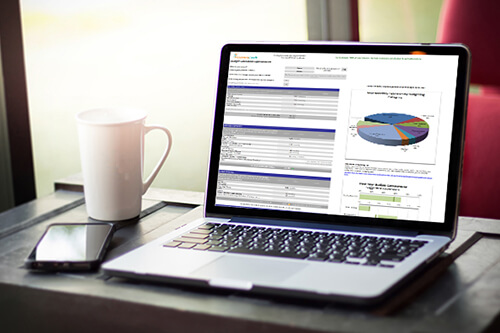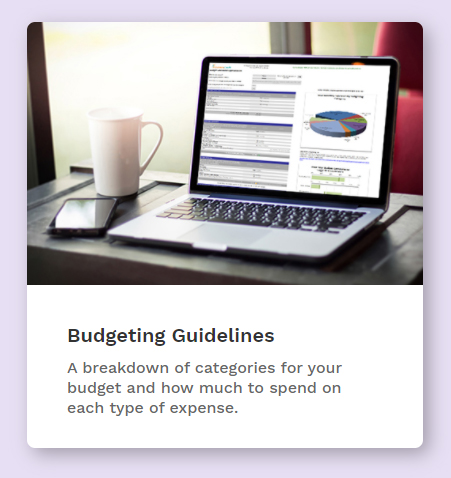What Does It Mean to Be Intentional With Spending?
Budget your money and set goals to help make spending choices that align with what’s important to you
By Carmen Chan
Are you someone who buys things impulsively, racking up debt on purchases you don’t really need? By the end of the month, people who don’t spend intentionally are left with more debt, no cash, and a lengthy list of debit and credit card charges they regret or can’t even remember making.
About one-in-six Canadians say their monthly spending exceeds their income and one-in-four end up borrowing to buy groceries or pay for daily expenses! But there is a philosophy that can undo your financial damage: intentional spending. Here’s a closer look at what it means to be intentional with your spending – and how you can adopt this way of living to help you get out of debt.
What is Intentional Spending?
In a nutshell, intentional spending is about spending your hard-earned money with a clear purpose. It’s about aligning your income – the spending and the saving – to your values and goals. With intentional spending, every cent is going towards what matters most in your life.
When you’re spending intentionally, you’re being deliberate with what you’re doing with your pay cheques, from the big-ticket items to your day-to-day expenses. It isn’t about tapping away with your debit or credit card without thinking of the repercussions or allowing your spending to be swayed by your mood, a big sale, or peer pressure.
In short, it’s about being mindful when it comes to your spending habits, accounting for every dollar you have, and giving it a purpose.
So how do you go about being intentional with your spending and saving? Check out the steps below.
1. Identify Your Financial Goals
Do you want to stop living pay cheque to pay cheque? Do you want to be debt-free by 40? Do you want to stop renting and become a homeowner? When you have a clear goal, chances are that you’ll think twice before mindlessly spending your money.
Sit down with a pen and paper and visualize what your life will look like in one, five, and 10 years. Who are you? Where do you live? What kind of lifestyle do you want to have?
You may realize you want a cozy home for your kids to grow up in, or you want to go back to school and change careers. Whichever path you want to take, you’ll need some financial goals to get you there.
For each financial goal, figure out how much money you’ll need and what date you’ll need it by. Your goals will shape the direction you’re moving in.
How to Set SMART Financial Goals
2. Define Your Values
A new wardrobe and extravagant dinners out, an exotic trip, a world-class gym with spin classes and saunas – in a world of mass consumption where bigger is better, we’re inundated with options to spend our money. A budget will allow you to have much of what you want, there’s no way to ever have everything you want. So, how do you decide what you want to spend your money on?
Everyone will have a different set of things they cherish in their lives, so your next step is to determine what you want to prioritize.
Ask yourself:
- What do I truly love to do?
- What do I want more of?
- What do I want to be known for?
Some people value travel and experiences over possessions, while others may want convenience, such as a meal delivery service or driving to work instead of taking the bus. Others want to improve their health with yoga classes or are passionate about their hobbies, like gardening or trying new restaurants.
Outline what you value, what enriches your life, what you can’t live without – these areas should be where you put your discretionary spending.
Keep your values close by – every time you’re tempted to spend money on something random, remind yourself that unplanned purchases take you further away from your goals and what you love to do.
How to Save More Money When Social Media Makes You Want to Spend
3. Chart Your Path With a Budget
Having a clear purpose for every dollar you have means a whole lot of tracking and budgeting, especially at the start. To begin with, monitor your expenses and track your spending. How much of your income is tied up with fixed expenses and how much is leftover for your goals and values?
Over the next few weeks, task yourself with writing down every amount you spend and what you spent it on. This can be an eye-opening activity – maybe you’ll see firsthand how much you’re blowing on fast food and coffee runs when you could have been making these meals and drinks at home. But it’s these catches that help you reroute your spending towards what makes you happy and what counts for your life.
With these insights, create a budget that allocates funds that reflect your goals and values. This isn’t about limiting your spending – it’s about spending wisely on things that matter to you!
Now, with your budget in hand, you’ve got a roadmap for what you should do with your income for the upcoming month.
Create a budget that allocates funds that reflect your goals and values. This isn’t about limiting your spending – it’s about spending wisely on things that matter to you.
4. Remind Yourself to Stay Grounded in Your Goals and Values
Distractions are bound to happen. Your friends will invite you to an expensive birthday dinner, the new iPhone will be launched, and a trendy restaurant will have a limited time menu.
Learning to say no – to yourself and to others – is an important part of intentional spending. If the offer, purchase, or invitation isn’t planned for and doesn’t align with your goals and values, it’s okay to decline. Saying no to most things will bring you closer to attaining the things you do want.
Help yourself to stay grounded in your values and goals with little reminders. Change your smartphone and laptop screensaver to a photo of the dream vacation you’re saving up for or stick a Post-it note with the date you’ll be debt-free on the back of your credit card.
And do what you love: your discretionary spending should be feeding your passions, so you don’t feel like you’re missing out.
The ‘Buy Nothing’ Movement Can Help You Spend More Intentionally
5. Cultivate Mindfulness When You’re Spending
Financial experts suggest a 30-day rule before making a purchase. If you’ve been eyeing a new laptop, sweater, or magazine subscription, create a habit of pausing before buying and find empowerment in delayed gratification. Intentional spending is very much rooted in self-discipline and control, which takes ongoing practice.
Mindfulness is a technique typically used for mental health, but it can boost your financial awareness too. It helps you to be present in the moment, so you’re paying close attention to your surroundings and how you’re feeling.
Do you splurge on takeout after a stressful day at work or do you go on a shopping spree when your favourite store emails you with a sale?
Mindfulness helps you break destructive and autopilot habits by zeroing in on your thoughts, emotions, and other in-the-moment experiences. It’ll help you identify your triggers, so you’re armed with a replacement behaviour and not left waffling or unsure about what to do.
Meal plan and batch cook on Sundays so you have dinner ready for the rest of the workweek and unsubscribe from all of your favourite stores’ newsletters. Have the foresight for what might get you into trouble with your spending and reroute your path.
How to Stop Spending Money: Tips to Curb Your Overspending
6. Revisit and Revise Your Plans
Now that you know what your short- and long-term goals are, what you love and find worth spending money on, and you have a budget to help you manage your money to accomplish both, the hard work of planning is done. But what lies ahead is execution.
Keep tracking your spending and stick to your budget, but revisit your plans. At the start, you may decide to check in at the end of each week, and then progress to the end of each month. How are you faring? Is your budget something you can easily stick to, or does it need refining?
Most importantly, look at your spending and saving – are you on track to save for your goals and are your purchases aligning with your values?
Life changes and so do our needs and priorities. You may decide to change things up, so it’s worth making time to see how your plans are progressing and where they need revising.
Professional Advice If You Need Help With Budgeting, Goal Settings, or Dealing With Debt to Make Intentional Spending Easier
If you want to start intentional spending and saving but you’re deep in debt without a plan, get into the driver’s seat with professional financial counselling at your side. Professional organizations, such as ours, the Credit Counselling Society, will teach you about managing your finances, creating a budget, and contacting your creditors to work out payment arrangements if that’s what you need. You’ll meet with one of our credit counsellors in person or by phone to review your financial situation and carve out a path forward. It’s free, confidential, and helps you figure out how to best get back on track. Options are readily available to help you tackle your debts and provide you with the skills to manage your finances for the long run.








